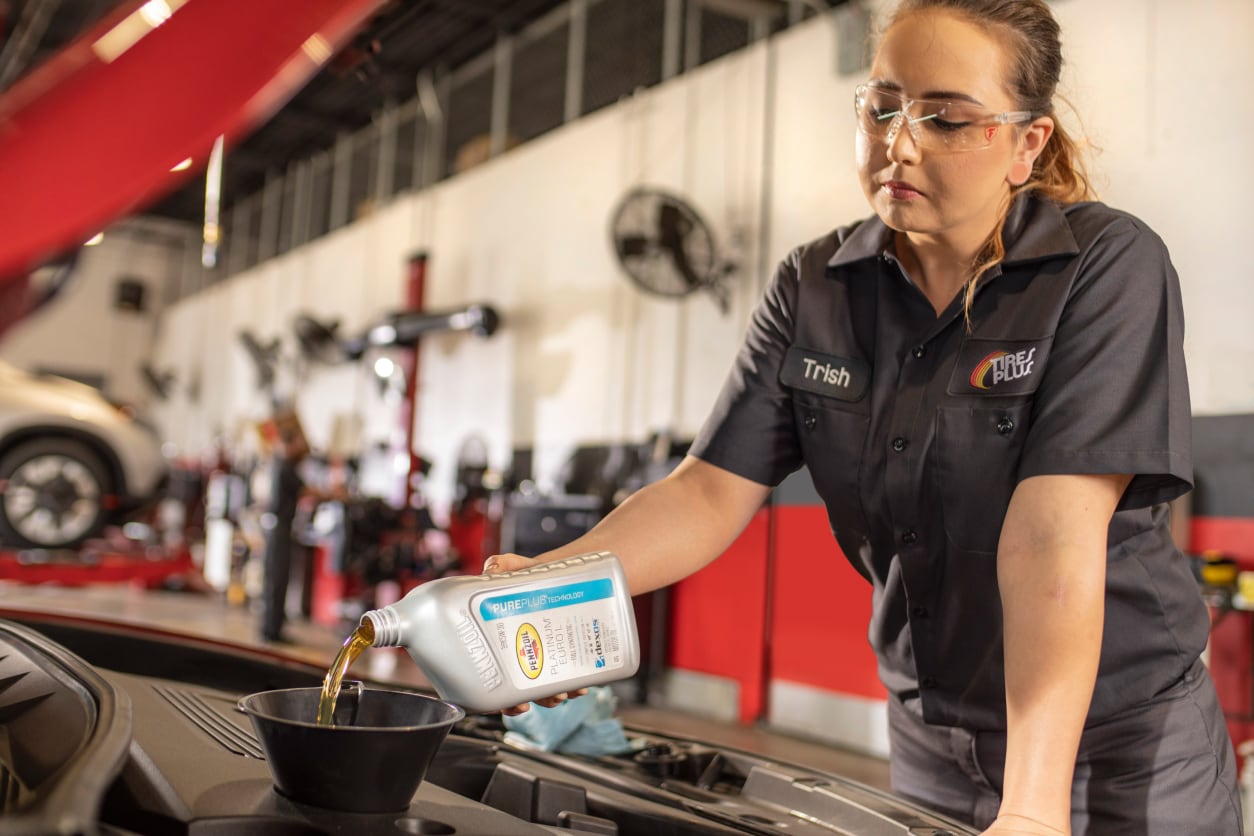Brand New Car: When Should I Change Oil?
Brand New Car: When Should I Change Oil? cars.truckstrend.com
The intoxicating scent of a brand new car is a delight, a promise of fresh adventures and reliable journeys. As you drive off the lot, full of excitement, a practical question often surfaces: "When should I change the oil in this pristine new engine?" This isn’t just a minor maintenance query; it’s a critical decision that impacts your vehicle’s longevity, performance, and even its warranty. Misinformation abounds, with old wives’ tales clashing with modern automotive engineering. Understanding the correct oil change schedule for your brand new vehicle is paramount to ensuring it runs smoothly for years to come.
This comprehensive guide will demystify the first oil change for your new car, breaking down the myths, highlighting the facts, and providing actionable insights to help you make the best decision for your prized possession.
Brand New Car: When Should I Change Oil?
The "Break-In" Period: Myth vs. Modern Reality
For decades, conventional wisdom dictated an immediate oil change – often within the first 500 to 1,000 miles – for a brand new car. The reasoning was sound at the time: new engines, fresh off the assembly line, would shed tiny metal shavings during their initial "break-in" period as components seated themselves. This metallic debris would contaminate the oil, necessitating an early flush to prevent premature wear.
However, modern automotive manufacturing has revolutionized engine production. Today’s engines are built with astonishing precision, using advanced machining techniques and materials that significantly reduce the amount of initial wear debris. Components are often pre-coated and pre-treated to minimize friction from the get-go. While a minuscule amount of "break-in" material might still occur, it’s typically far less significant than in engines of yesteryear, and modern engine oils are formulated with advanced detergents and dispersants to handle these tiny particles effectively.
The reality is: For most new cars today, the immediate "break-in" oil change is largely obsolete. Following your manufacturer’s specific recommendations is now the golden rule.
Your Owner’s Manual: The Ultimate Authority
If there’s one piece of advice you take from this entire article, let it be this: consult your vehicle’s owner’s manual. This seemingly unassuming booklet is the most authoritative and crucial source of information regarding your specific vehicle’s maintenance needs, including its first and subsequent oil changes.
Why is the owner’s manual so important?
- Manufacturer Specificity: Every car model, and even different engine variants within the same model, has unique requirements. The manufacturer has engineered your vehicle and its engine, and they know precisely what kind of oil it needs and when it needs changing for optimal performance and longevity.
- Warranty Preservation: Adhering to the manufacturer’s recommended maintenance schedule is often a condition of your vehicle’s warranty. Deviating from it, particularly by neglecting scheduled services, can potentially void parts of your warranty, leading to costly out-of-pocket repairs.
- Optimized Performance: Following the manual ensures your engine receives the correct lubrication at the right time, maintaining peak efficiency, fuel economy, and power throughout its lifespan.

Look for sections titled "Maintenance Schedule," "Service Intervals," or "Fluid Capacities and Specifications." It will clearly state the recommended oil type (viscosity, API ratings, specific certifications) and the interval for your first oil change, which is often the same as subsequent intervals.

Understanding Modern Oil Change Intervals and Oil Life Monitoring Systems (OLMS)
Gone are the days of the universal 3,000-mile oil change. Modern vehicles, especially new ones, utilize sophisticated engineering and advanced lubricants to extend oil change intervals significantly.
- Synthetic Oil: Many new cars come from the factory with full synthetic oil, or require it for future changes. Synthetic oils are engineered to perform better under extreme temperatures, resist breakdown, and maintain their protective properties for much longer than conventional oils. This allows for extended intervals, often ranging from 7,500 to 10,000 miles, or even more.
- Oil Life Monitoring Systems (OLMS): A common feature in new cars, an OLMS is not just a mileage counter. These intelligent systems use complex algorithms to monitor various parameters that affect oil life, such as engine revolutions, engine temperature, driving conditions (e.g., short trips, towing, idling), and even the quality of the oil itself. When the system determines the oil has reached the end of its effective life, it will trigger a warning light or message on your dashboard, typically indicating a percentage of oil life remaining (e.g., "Oil Life: 20%"). Trust your OLMS. It’s designed to tell you precisely when your oil needs changing based on your actual driving habits.

Factors Influencing Your Oil Change Schedule
While your owner’s manual and OLMS are your primary guides, certain factors can influence whether you might need to adjust your schedule slightly:
- Driving Conditions:
- "Normal" Driving: This typically refers to a mix of highway and city driving, without extreme conditions. Most manufacturer intervals are based on this.
- "Severe" or "Extreme" Driving: If your driving habits fall into this category, your oil might degrade faster. Severe conditions include:
- Frequent short trips (less than 10 miles), especially in cold weather.
- Stop-and-go city driving.
- Towing heavy loads.
- Driving in extremely hot or cold climates.
- Driving on dusty, muddy, or sandy roads.
- Extensive idling.
If you regularly engage in severe driving, your manual will likely specify a shorter interval.
- Time: Even if you don’t drive many miles, oil degrades over time due to oxidation and contamination from condensation. Most manufacturers recommend an oil change at least once a year, regardless of mileage, if you haven’t reached the mileage threshold.
- Oil Type: As mentioned, synthetic oil offers superior protection and longer intervals compared to conventional or synthetic blends. Always use the oil type recommended by your manufacturer.
The Benefits of Timely Oil Changes for a New Car
Adhering to the correct oil change schedule offers numerous benefits for your new vehicle:
- Engine Longevity: Fresh, clean oil lubricates moving parts, reduces friction, and prevents wear, significantly extending the life of your engine.
- Optimal Performance: Properly lubricated components operate more efficiently, contributing to better fuel economy and consistent power output.
- Warranty Protection: Following the manufacturer’s schedule ensures your warranty remains valid, protecting you from potentially expensive repairs.
- Reduced Emissions: Clean oil helps your engine run cleaner, contributing to lower emissions and a healthier environment.
- Higher Resale Value: A well-documented maintenance history, especially consistent oil changes, demonstrates responsible ownership and can increase your vehicle’s resale value.
How to Check Your Oil Level and Condition
Even with an OLMS, it’s a good habit to periodically check your oil level and condition, especially in a new car.
- Park on Level Ground: Ensure the car is on a flat surface.
- Warm Engine (Slightly): Drive the car for a few minutes to get the oil flowing, then turn it off and wait 5-10 minutes for the oil to settle back into the pan.
- Locate Dipstick: Pull out the yellow or orange dipstick, usually marked with an oil can symbol.
- Wipe Clean: Wipe the dipstick completely clean with a rag or paper towel.
- Reinsert and Remove: Reinsert the dipstick fully, then pull it out again.
- Check Level: The oil level should be between the "MIN" and "MAX" (or "ADD" and "FULL") marks. If it’s below "MIN," add oil.
- Check Condition: Observe the oil’s color (dark brown/black is normal for used oil, but not sludgy), consistency (should be smooth, not gritty), and smell (shouldn’t smell burnt).
DIY vs. Professional Oil Change for a New Car
For a brand new car, especially for the first few services, professional service is often recommended, particularly if you’re concerned about warranty implications.
- Professional Advantages: Dealerships and certified service centers use the correct oil and filter types, have specialized tools, and their service records are automatically logged, simplifying warranty claims. They can also perform multi-point inspections and identify potential issues early.
- DIY Considerations: While changing your own oil can save money, ensure you use the exact manufacturer-specified oil and filter. Crucially, keep meticulous records (receipts for oil/filter, date, mileage) in case a warranty claim arises. Any mistake in oil type or quantity could potentially void your warranty.
Common Mistakes to Avoid
- Ignoring the Owner’s Manual: This is the biggest mistake. Your manual is your car’s bible.
- Sticking to Outdated Advice: Don’t blindly follow the 3,000-mile rule if your manual or OLMS says otherwise. You’ll waste money and resources.
- Using the Wrong Oil Type: Different engines require specific oil viscosities and formulations (e.g., synthetic vs. conventional, specific certifications like API SN PLUS, Dexos, etc.). Using the wrong oil can lead to premature engine wear.
- Extending Intervals Too Far: While modern oils last longer, don’t push them beyond the manufacturer’s recommendations or the OLMS warning.
- Ignoring the Oil Life Monitor: If your car has an OLMS, trust it. It’s more accurate than a simple mileage count based on your specific driving conditions.
Table: Typical Oil Change Service Costs (Estimates for New Cars)
Understanding the typical costs associated with oil changes can help you budget for your new car’s maintenance. These are general estimates and can vary significantly based on vehicle make/model, region, service provider (dealership vs. independent shop), and specific oil type/brand used.
| Oil Change Type | Estimated Cost Range (USD) | Typical Interval (Miles/Months) | Notes |
|---|---|---|---|
| Full Synthetic Oil | $70 – $120+ | 7,500 – 10,000+ miles / 6-12 months | Superior protection, required for many new cars. Often includes a new filter and labor. |
| Premium/European Spec Synthetic | $100 – $150+ | 10,000 – 15,000+ miles / 12 months | Specific formulations for high-performance, luxury, or European engines with extended drain intervals (e.g., Mercedes-Benz, BMW, Audi). |
| Synthetic Blend Oil | $50 – $80 | 5,000 – 7,500 miles / 6-9 months | A mix of conventional and synthetic base oils. Good value, often used in vehicles that don’t strictly require full synthetic but benefit from enhanced protection. |
| Conventional Oil | $30 – $60 | 3,000 – 5,000 miles / 3-6 months | Less common for new cars unless specified. Basic protection, suitable for older engines or specific applications. |
| Additional Services (Often Bundled with Oil Change) | |||
| Tire Rotation | Included / $20 – $40 | Every 5,000 – 7,500 miles | Helps ensure even tire wear and extend tire life. Often included in a standard service package. |
| Multi-Point Inspection | Often Included | Every service | A visual check of fluids, lights, belts, hoses, tires, brakes, and general vehicle condition. |
| Fluid Top-Offs | Often Included | Every service | Topping off windshield washer fluid, coolant, power steering fluid (if applicable). |
Disclaimer: These figures are approximate. Always get a quote from your preferred service provider. Dealerships may be slightly more expensive but often use OEM parts and provide certified service records.
Frequently Asked Questions (FAQ)
Q1: Do I really need to change the oil in a brand new car sooner than the manual says?
A1: Generally, no. Modern manufacturing processes mean the old "break-in" oil change at 500-1,000 miles is largely unnecessary. Trust your owner’s manual or your car’s Oil Life Monitoring System.
Q2: What is an Oil Life Monitoring System (OLMS) and how reliable is it?
A2: An OLMS is a sophisticated system that uses algorithms to analyze various driving conditions (temperature, engine RPMs, trip length, etc.) and determine the remaining life of your engine oil. It’s highly reliable and designed to tell you precisely when your oil needs changing based on how you actually drive, making it more accurate than a fixed mileage interval.
Q3: Is synthetic oil worth the extra cost for a new car?
A3: Absolutely. Many new cars are designed to run on synthetic oil from the factory. Synthetic oil offers superior protection, better performance in extreme temperatures, and allows for longer oil change intervals, making it a cost-effective choice in the long run by protecting your engine and potentially reducing the frequency of services.
Q4: Will changing my oil too often hurt my engine?
A4: No, changing your oil more frequently than recommended won’t harm your engine. However, it’s an unnecessary expense and wastes resources. Stick to the manufacturer’s recommendations or your OLMS to balance protection with efficiency.
Q5: What if I lose my owner’s manual?
A5: Most manufacturers provide digital versions of their owner’s manuals online. You can usually download a PDF directly from the manufacturer’s official website by entering your car’s year, make, and model, or VIN. Your dealership can also provide a copy.
Q6: Does my driving style affect the oil change interval?
A6: Yes. If you frequently engage in "severe" driving conditions (e.g., short trips, heavy stop-and-go traffic, extreme temperatures, towing, dusty roads), your oil will degrade faster. Your owner’s manual will likely have a separate, shorter interval for these conditions, and your OLMS will account for them.
Conclusion
The excitement of owning a brand new car comes with the responsibility of proper maintenance. When it comes to the crucial task of oil changes, the key takeaway is clear: your owner’s manual is your ultimate guide. Embrace modern automotive technology, trust your car’s Oil Life Monitoring System if it has one, and understand that today’s engines and oils allow for significantly longer intervals than in the past.
By adhering to your vehicle’s specific recommendations, using the correct type of oil, and being mindful of your driving conditions, you’ll ensure your new car’s engine remains healthy, efficient, and reliable for countless miles and years to come. This proactive approach to maintenance not only protects your investment but also provides the peace of mind that comes with responsible car ownership.





